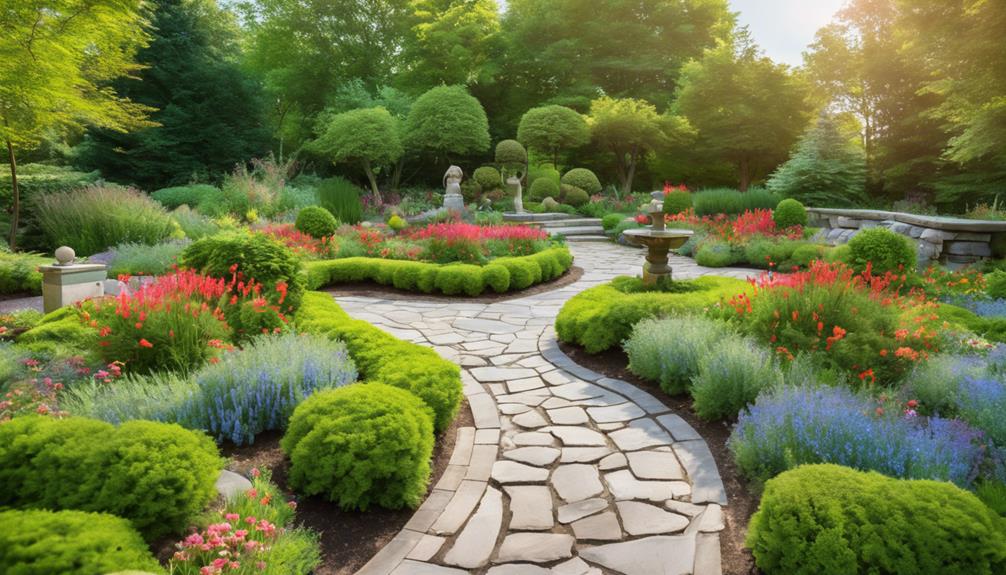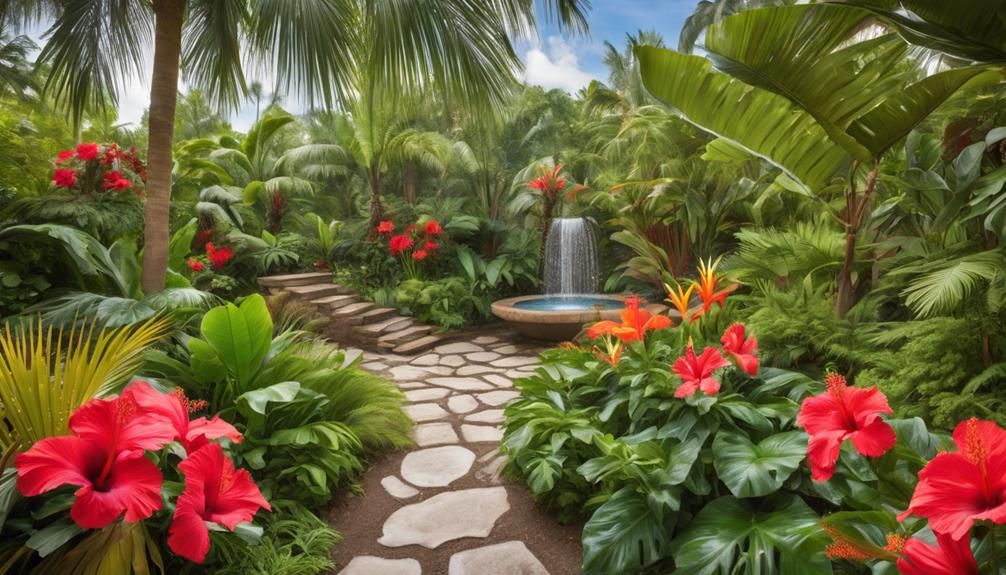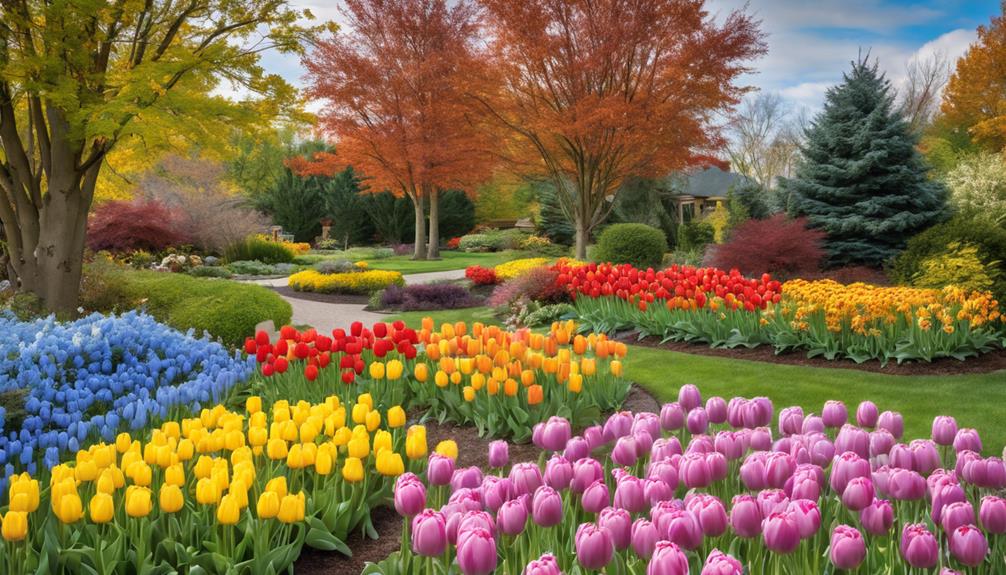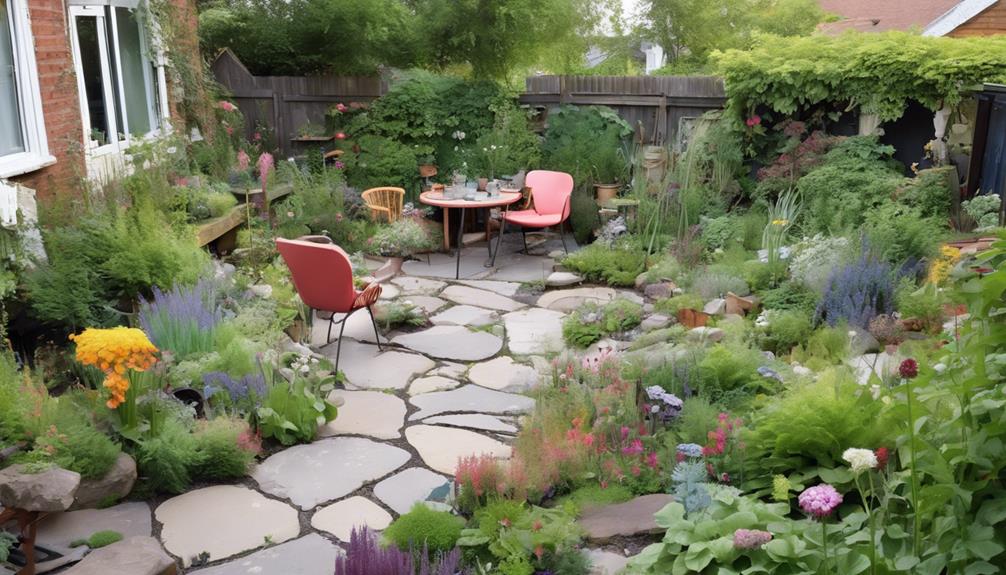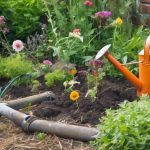
Top 5 Garden Maintenance Mistakes to Avoid
17 January 2025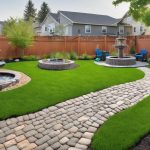
What Are the Best Hardscaping Services for Pets?
17 January 2025Uncovering top garden design consultation services can transform your outdoor space into a stunning and sustainable retreat.
These services prioritise principles such as balance, proportion, and rhythm to create harmonious landscapes. Expert consultants assess your site for soil, climate, and sunlight, ensuring proper plant selection.
They integrate eco-friendly practices, efficient watering systems, and organic fertilisation methods to enhance both aesthetics and functionality.
As a result, a well-designed garden not only increases property value but also fosters a thriving ecosystem.
Investigate further to learn about the specific services and advantages offered by leading garden designers in your area.
Garden Design Essentials Explained
Understanding the key design principles is fundamental to creating a harmonious garden that meets both aesthetic and functional goals.
Furthermore, informed plant selection plays a vital role in ensuring the sustainability and visual appeal of the landscape.
This discussion will explore these important elements to enhance your garden design process.
Key Design Principles
In garden design, a solid grasp of key design principles is essential for creating visually appealing and functional outdoor spaces.
Fundamental concepts such as balance, proportion, and rhythm guide the arrangement of elements, ensuring harmony within the landscape. Balance can be achieved through symmetrical or asymmetrical layouts, while proportion dictates the scale of plants and structures relative to one another and the surrounding space.
Rhythm, established through repetition and contrast, enhances movement and flow throughout the garden. Furthermore, the use of focal points draws attention to specific areas, creating visual interest.
Integrating these principles not only boosts aesthetic value but also fosters an environment that meets the practical needs of its users, ultimately resulting in a cohesive and inviting landscape design.
Plant Selection Tips
Selecting the right plants is a significant component of successful garden design, building upon the foundational principles of balance, proportion, and rhythm.
Begin by evaluating your site's conditions, including soil type, light exposure, and climate, as these factors will influence plant health and growth. Aim for diversity by incorporating a mix of perennials, annuals, and shrubs to create layered textures and seasonal interest.
Consider the mature size of each plant to maintain harmonious proportions within the space. Furthermore, select species with complementary colours and forms to improve visual appeal and cohesion.
Ultimately, prioritise native plants, which foster biodiversity and require less maintenance.
Thoughtful plant selection not only enhances aesthetics but also guarantees the sustainability of your garden design.
Plant Selection Criteria
Effective plant selection is essential for a successful garden design, as it hinges on several key criteria.
Factors such as soil type and quality, climate and weather conditions, and plant growth habits must be carefully considered to ensure ideal growth and sustainability.
Soil Type and Quality
Understanding soil type and quality is vital for making informed plant selection decisions in garden design. Different plants thrive in specific soil conditions, and recognising these can greatly improve the health and aesthetics of your garden.
Key factors include:
- Soil Texture: Identifies the proportions of sand, silt, and clay, influencing drainage and nutrient retention.
- pH Levels: Affects nutrient availability; most plants prefer a slightly acidic to neutral pH.
- Organic Matter: Boosts soil fertility and structure, promoting microbial activity and water retention.
- Drainage Capability: Important for preventing root rot; well-drained soils are critical for many plant types.
Climate and Weather Conditions
Considering climate and weather conditions is essential for successful plant selection in garden design. A thorough understanding of these factors enables designers to choose plants that will thrive in their specific environments.
When evaluating climate and weather, consider the following criteria:
- Temperature Range: Identify the average and extreme temperatures to select suitable species.
- Precipitation Patterns: Assess rainfall frequency and intensity to determine irrigation needs.
- Sunlight Availability: Evaluate sun exposure throughout the day to ensure proper light for photosynthesis.
- Wind Exposure: Analyse prevailing winds to protect sensitive plants from potential damage.
Plant Growth Habits
In garden design, selecting plants based on their growth habits is crucial for creating a harmonious and sustainable landscape.
Understanding how plants grow—whether they are upright, spreading, or cascading—enables designers to create visually appealing arrangements that thrive together.
Key considerations include:
- Growth Rate: Choose fast-growing plants for quick results, or slower varieties for more controlled development.
- Height and Spread: Consider mature dimensions to prevent competition for light and space.
- Life Cycle: Balance annuals, perennials, and biennials to ensure year-round interest and vigour.
- Root Systems: Recognise the significance of root depth and spread to facilitate nutrient and water access.
Design Layout Planning Steps
Effective garden design begins with an initial consultation meeting, during which client needs and preferences are thoroughly assessed.
This provides the foundation for incorporating sustainable material usage and creative water management systems, ensuring both aesthetic appeal and environmental responsibility.
Initial Consultation Meeting
As the foundation of any successful garden design project, the initial consultation meeting serves as a critical opportunity for clients and designers to align their visions.
This meeting establishes the groundwork for a collaborative relationship, ensuring both parties understand their goals, preferences, and constraints.
Key components to address include:
- Client Aspirations: Discuss the desired aesthetics and functionality of the garden space.
- Site Assessment: Evaluate the physical characteristics and limitations of the property.
- Budget Considerations: Set financial parameters to guide material and design choices.
- Timelines: Establish realistic project milestones and completion dates.
Through this structured dialogue, both client and designer can effectively craft a cohesive design strategy, leading to an impactful and personalised garden space.
Sustainable Material Usage
Incorporating sustainable material usage into garden design not only enhances ecological responsibility but also enriches the overall aesthetic and functionality of the space.
Thoughtful selection of materials can significantly influence the entire design while promoting environmental stewardship.
Key considerations for sustainable material usage include:
- Recyclable Materials: Opt for items such as reclaimed wood or recycled metal to minimise waste.
- Locally Sourced Options: Support local economies and reduce carbon footprints by choosing materials produced nearby.
- Durability: Invest in long-lasting materials that can withstand the elements, reducing the need for replacements.
- Low Maintenance: Select materials that require minimal upkeep, conserving both time and resources.
Incorporating these elements not only enhances the garden's appeal but also contributes to a more sustainable future.
Innovative Water Management Systems
Three crucial steps are essential for designing groundbreaking water management systems in garden layouts. Effective planning guarantees optimal water usage, enhancing both sustainability and aesthetics.
- Assessment of Site Conditions: Evaluate soil type, drainage patterns, and existing water sources to inform system design.
- Selection of Appropriate Systems: Consider rainwater harvesting, drip irrigation, and permeable paving to efficiently manage water flow.
- Integration with Landscape Design: Seamlessly incorporate water features such as ponds or bioswales that promote biodiversity while fulfilling functional needs.
- Ongoing Maintenance Planning: Establish a plan for regular monitoring and upkeep to ensure long-term effectiveness and adaptability to changing conditions.
Enhanced Property Value
Investing in garden design consultation services can significantly enhance property value, often yielding a return on investment that exceeds expectations. A well-designed garden enhances curb appeal, creates inviting outdoor spaces, and contributes to a harmonious aesthetic that attracts potential buyers. Moreover, thoughtfully selected plants and landscaping elements can substantially reduce maintenance costs, further increasing desirability.
| Feature | Impact on Property Value |
|---|---|
| Curb Appeal | Attracts potential buyers |
| Outdoor Living Spaces | Increases usability |
| Native Plant Selection | Lowers maintenance costs |
| Sustainable Practices | Appeals to eco-conscious buyers |
| Professional Design | Ensures aesthetic harmony |
Eco-Friendly Pest Management Techniques
Effective garden management requires a focus on eco-friendly pest control methods that minimise harm to the environment.
Utilising natural insect repellents, implementing organic fertiliser application techniques, and employing compost tea can greatly improve plant health while reducing pest-related issues.
These practices not only promote sustainability but also contribute to a thriving garden ecosystem.
Natural Insect Repellents Usage
Utilising natural insect repellents is a sustainable approach to managing pests in garden design.
These eco-friendly alternatives not only protect your plants but also promote a healthy ecosystem. Implementing natural repellents can considerably reduce reliance on chemical pesticides, which can be harmful to beneficial insects and the environment.
Consider the following natural insect repellent options:
- Neem oil: Derived from the seeds of the neem tree, it disrupts the life cycle of pests.
- Diatomaceous earth: A powdery substance that damages the exoskeletons of insects, leading to dehydration.
- Essential oils: Oils such as peppermint and lavender can deter numerous insects due to their strong scents.
- Garlic spray: A natural deterrent, garlic's pungency can repel many common garden pests.
Incorporating these techniques fosters a thriving garden ecosystem.
Organic Fertilizer Application Techniques
Organic fertilisers play a crucial role in enhancing soil health and providing essential nutrients to plants, which in turn can contribute to effective pest management.
Utilising these techniques not only promotes plant vitality but also fortifies the ecosystem against pest invasions.
Implementing the following organic fertiliser application techniques can optimise your garden's health:
- Soil Testing: Assess nutrient levels to tailor your organic fertiliser selection.
- Top Dressing: Apply a layer of compost or organic material to the soil surface, enriching it gradually.
- Liquid Fertiliser: Use diluted organic solutions for direct nutrient uptake by plants.
- Timing and Frequency: Schedule applications based on plant growth stages for maximum effectiveness.
Mastering these techniques will lead to a thriving garden, inherently resistant to pest problems.
Compost Tea Application Techniques
Applying compost tea is a creative approach to enhancing plant health and managing pests in an eco-friendly manner. This nutrient-rich liquid, derived from steeping compost in water, serves as a foliar feed and soil drench, promoting beneficial microorganisms while deterring harmful pests.
To effectively apply compost tea, consider the following techniques:
- Dilution: Always dilute compost tea with water to avoid overwhelming plants with nutrients.
- Timing: Apply during early morning or late afternoon to minimise evaporation and optimise absorption.
- Method: Use a spray bottle for foliar applications, ensuring even coverage on the leaves.
- Frequency: Reapply every 2-4 weeks, particularly during peak growing seasons, to maintain plant health.
Inefficient Watering Methods
Inefficient watering methods can lead to significant water wastage and hinder plant growth.
Implementing drip irrigation systems, utilising soil amendments, and adopting rainwater harvesting techniques are effective strategies to enhance water efficiency in garden design.
Drip Irrigation System Implementation
A significant number of gardeners and landscapers still rely on outdated watering methods that can lead to inefficient water usage and plant health issues.
Transitioning to a drip irrigation system presents a solution that conserves water while delivering targeted nourishment to plants. This modern approach not only enhances plant vitality but also promotes sustainability.
Key benefits of implementing a drip irrigation system include:
- Water Efficiency: Reduces evaporation and runoff, ensuring more water reaches the roots.
- Consistent Moisture: Maintains ideal soil moisture levels for healthy plant growth.
- Weed Reduction: Minimises water delivery to non-target areas, hindering weed growth.
- Customisable Design: Easily adapts to different garden layouts and plant types.
Embracing these innovative techniques can elevate your gardening practice to new heights.
Soil Amendments for Better Growth
Improving soil quality is essential for fostering robust plant growth, especially when traditional watering methods fall short.
Soil amendments enhance nutrient availability and moisture retention, ultimately supporting healthier plants. To achieve optimal results, consider the following amendments:
- Compost: Enriches soil with organic matter, improving structure and fertility.
- Peat Moss: Enhances moisture retention and aeration, making it ideal for sandy soils.
- Gypsum: Improves soil structure in clay-heavy areas, promoting drainage and reducing compaction.
- Mulch: Helps retain soil moisture and suppress weeds, contributing to a healthier ecosystem.
Incorporating these amendments allows for a more resilient garden, mitigating the challenges posed by inefficient watering practices and ensuring that plants thrive in a supportive environment.
Rainwater Harvesting Techniques
As climate variability increasingly affects water availability, rainwater harvesting has emerged as a practical solution for effective garden irrigation. This technique not only conserves water but also reduces dependency on municipal supplies, promoting sustainability.
Implementing rainwater harvesting involves several key strategies:
- Collection Systems: Utilise gutters and downspouts to direct rainwater into storage tanks.
- Filtration and Treatment: Ensure collected water is free from debris and contaminants for safe use.
- Distribution: Employ drip irrigation systems to minimise water waste and deliver moisture directly to plant roots.
- Maintenance: Regularly inspect and clean storage systems to optimise efficiency and longevity.
Why Choose TKL Birmingham Gardener
Recognising the unique needs of each garden, TKL Birmingham Gardener stands out as a premier choice for those seeking expert garden design consultation services.
Their team of seasoned professionals combines horticultural expertise with a profound understanding of design principles, guaranteeing that every project reflects the client's vision while enhancing the natural beauty of the space.
TKL employs a holistic approach, integrating sustainable practices and innovative solutions tailored to individual landscapes.
By prioritising client collaboration, they cultivate a thorough design process that anticipates future growth and seasonal changes.
In addition, their commitment to quality craftsmanship and attention to detail ensures long-lasting results.
Trusting TKL Birmingham Gardener means investing in a harmonious garden that aligns with your aspirations and the environment.
Common Garden Design Questions
When initiating a garden design project, clients often have a myriad of questions that reflect their diverse needs and concerns. Common inquiries include understanding the design process, timelines, and budget considerations.
Clients frequently ask how to select suitable plants that align with their aesthetic preferences and local climate conditions. Moreover, many seek guidance on incorporating sustainable practices and features, such as water-efficient irrigation systems or native plant selections.
Questions about maintenance requirements, seasonal changes, and the integration of hard landscaping elements often arise as well. Understanding these common queries empowers clients to make informed decisions, ensuring their garden design experience is both fulfilling and tailored to their unique vision and lifestyle.
Addressing these concerns can greatly enhance the entire project experience.
Final Thoughts on Design
Addressing common garden design questions sets a solid foundation for a successful project, but the path doesn't end there.
Mastery in garden design requires continual refinement and an understanding of evolving aesthetics and horticultural practices.
Here are key considerations to enhance your design:
- Sustainability: Incorporate native plants and efficient irrigation to promote environmental harmony.
- Seasonality: Plan for year-round interest by selecting plants that bloom in different seasons.
- Functionality: Ensure that the design serves both aesthetic and practical purposes, accommodating activities such as entertaining or relaxation.
- Personalisation: Reflect your unique style and preferences, creating a garden that resonates with your identity.
Ultimately, a well-rounded approach to garden design fosters not just beauty but also functionality and sustainability.

